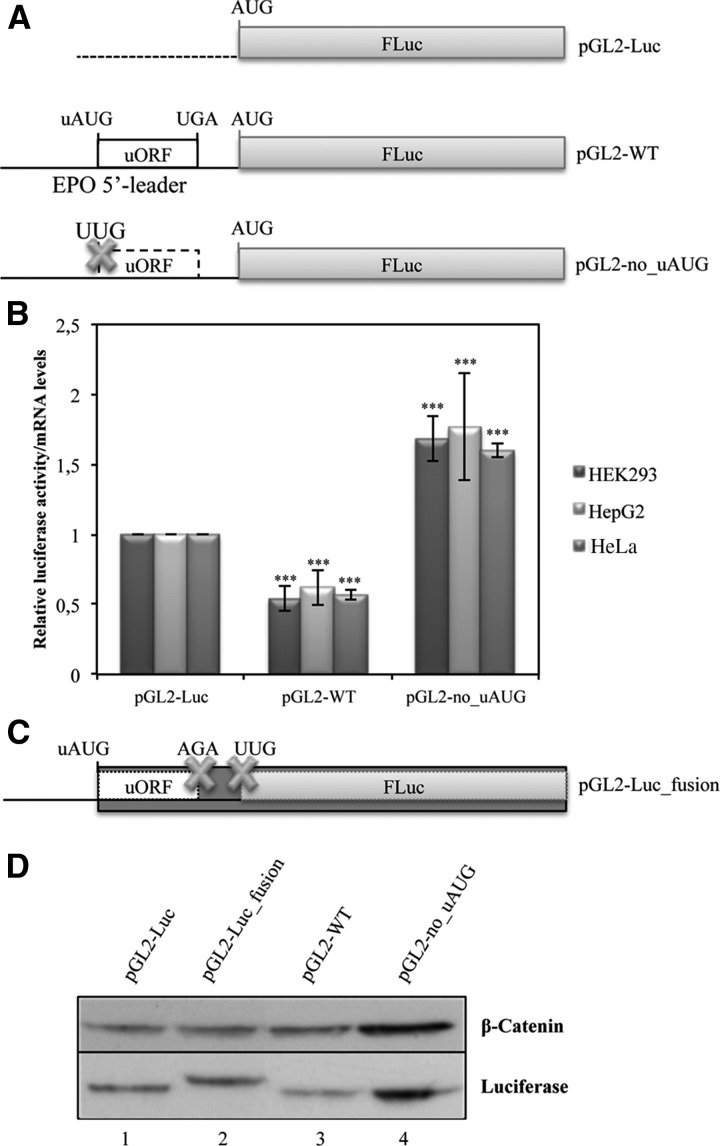FIGURE 2.
The EPO uORF represses translation of the downstream main ORF. (A) Schematic representation of reporter constructs. The human EPO 5′-leader sequence encompassing its uORF (open box) with the intact initiation (uAUG) and termination (UGA) codons was cloned into the empty vector (pGL2-Luc), upstream of the firefly luciferase coding region (FLuc; gray boxes) to create the pGL2-WT construct. In the pGL2-no_uAUG construct, the uORF initiation codon is mutated (AUG→UUG; the cross represents the point mutation, and the dashed lined box represents the nonfunctional uORF). (B) The EPO 5′-leader sequence represses protein expression of the downstream reporter. HEK293, HepG2, and HeLa cells were transiently cotransfected with each one of the constructs described in A and with the pRL-TK plasmid encoding the Renilla luciferase (RLuc). Cells were lysed 24 h later, and the luciferase activity and mRNA levels were measured by luminometry assays and RT-qPCR, respectively. The graph represents the data as translational efficiency (relative luciferase activity/mRNA levels). Expression levels obtained from pGL2-Luc construct were defined as one. Average values and SD of three independent experiments are shown. Statistical analysis was performed using Student's t-test (unpaired, two-tailed): (**) P<0.01; (***) P<0.001. (C) Schematic representation of additional reporter constructs. The uORF stop codon was mutated in cis with a deletion of 1 nt downstream 4 nt from the stop codon (TGAgggac→AGAggg-c), so that both initiation codons (uAUG and AUG) are in frame. Also the AUG of the FLuc coding region was mutated (AUG→UUG) in the pGL2-Luc_fusion construct, encoding a fusion protein represented by the darker box. Crosses represent the point mutations. (D) Translation initiation can occur at the EPO uAUG. The constructs specified above each lane were transiently transfected in HEK293 cells. Twenty-four hours later, lysates were prepared and analyzed by Western blot. Immunoblotting was performed by using a firefly luciferase (FLuc)–specific antibody and a human β-catenin–specific antibody as a control for variations in protein loading.

